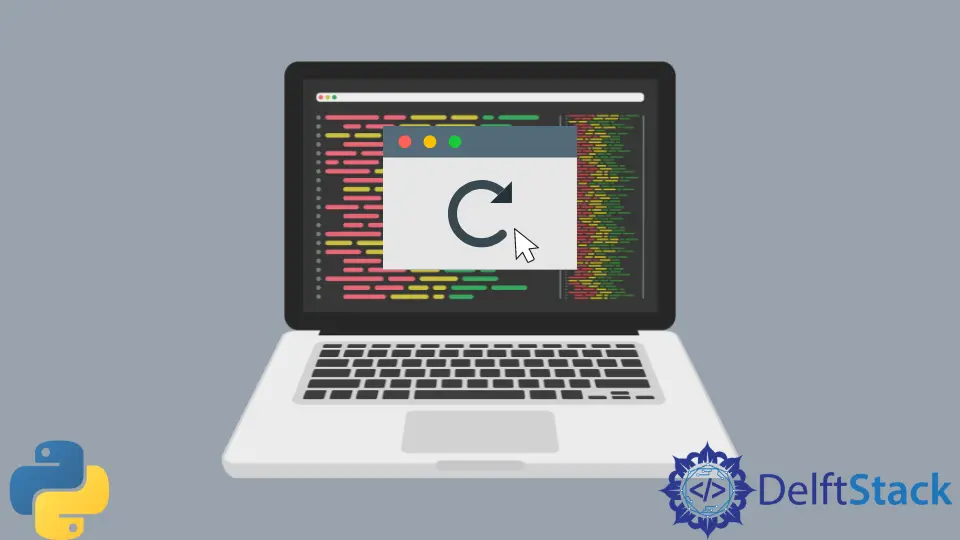How to Refresh Page in Python Selenium
- Understanding Selenium and Its Importance
- Method 1: Using the refresh() Function
- Method 2: Using JavaScript Execution
- Method 3: Refreshing with a Delay
- Conclusion
- FAQ

In today’s fast-paced digital world, web automation has become a necessity for developers and testers alike. One of the most popular tools for this purpose is Selenium, a powerful framework that allows you to interact with web applications through your browser.
In this article, we will explore how to refresh a webpage using Python and Selenium. The ability to refresh a webpage autonomously is crucial for various testing scenarios, ensuring that the latest content is always displayed. We’ll dive into the Selenium WebDriver’s refresh() function, which is the most effective way to achieve this. So, let’s get started!
Understanding Selenium and Its Importance
Before we dive into the specifics of refreshing a page, it’s essential to understand what Selenium is and why it’s a critical tool in web automation. Selenium is an open-source framework that provides a suite of tools for automating web browsers. It supports multiple programming languages, including Python, Java, and C#.
With Selenium, you can simulate user interactions like clicking buttons, filling out forms, and navigating between pages. This makes it an invaluable asset for testing web applications, as it helps developers ensure that their applications function correctly across different browsers and platforms.
In the context of refreshing a page, Selenium’s capabilities allow you to automate the process of reloading a webpage, which can be particularly useful when you want to check for updates or changes in real-time.
Method 1: Using the refresh() Function
One of the simplest and most effective ways to refresh a webpage in Selenium is by using the refresh() function provided by the WebDriver. This method is straightforward and works seamlessly across different browsers.
Here’s how you can implement it:
from selenium import webdriver
driver = webdriver.Chrome()
driver.get("https://www.example.com")
# Refresh the page
driver.refresh()
driver.quit()
Output:
The webpage at https://www.example.com is refreshed.
In this code snippet, we start by importing the necessary webdriver module from Selenium. We then create an instance of the Chrome WebDriver and navigate to a specified URL. The refresh() function is called right after the page loads, which refreshes the current page. Finally, we close the browser using driver.quit().
This method is particularly useful when you want to ensure that you are viewing the most up-to-date version of a webpage, especially in applications where content changes frequently.
Method 2: Using JavaScript Execution
Another effective way to refresh a webpage in Selenium is by executing JavaScript. This method can be particularly useful when you want to have more control over the refresh process or when the refresh() function does not behave as expected.
Here’s how you can use JavaScript to refresh a page:
from selenium import webdriver
driver = webdriver.Chrome()
driver.get("https://www.example.com")
# Refresh the page using JavaScript
driver.execute_script("location.reload();")
driver.quit()
Output:
The webpage at https://www.example.com is refreshed using JavaScript.
In this example, we again start by importing the webdriver and creating an instance of the Chrome WebDriver. After navigating to the desired URL, we use the execute_script() method to run a JavaScript command that reloads the page. The command location.reload(); is a standard JavaScript function for refreshing a webpage. Finally, we close the browser with driver.quit().
Using JavaScript for refreshing can be advantageous in scenarios where you need to bypass certain browser restrictions or when working with pages that may require a specific refresh behavior.
Method 3: Refreshing with a Delay
In some cases, you might want to refresh a webpage after a specific delay. This can be useful for monitoring changes over time or for testing how an application behaves after a certain period.
Here’s how you can implement a timed refresh:
from selenium import webdriver
import time
driver = webdriver.Chrome()
driver.get("https://www.example.com")
# Wait for 5 seconds before refreshing
time.sleep(5)
driver.refresh()
driver.quit()
Output:
The webpage at https://www.example.com is refreshed after a delay.
In this code snippet, we again import the webdriver and create a Chrome WebDriver instance. After navigating to the desired URL, we use the time.sleep(5) function to wait for 5 seconds before calling the refresh() function. This method effectively pauses the execution of the script, allowing you to observe the page before it refreshes. Finally, we close the browser using driver.quit().
This approach is particularly useful in scenarios where you want to monitor changes on a webpage over time, such as tracking stock prices or news updates.
Conclusion
Refreshing a webpage in Python using Selenium is a straightforward task that can be accomplished through various methods. Whether you choose to use the built-in refresh() function, execute JavaScript, or implement a timed refresh, each method has its unique advantages. Understanding these techniques can significantly enhance your web automation skills and improve your testing processes. As you continue to explore Selenium, you’ll find that mastering these basic functionalities will pave the way for more complex automation tasks.
FAQ
-
What is Selenium?
Selenium is an open-source framework for automating web browsers, allowing developers to simulate user interactions for testing purposes. -
Can I use Selenium with any programming language?
Yes, Selenium supports multiple programming languages, including Python, Java, C#, and Ruby. -
How do I install Selenium in Python?
You can install Selenium using pip with the commandpip install selenium. -
Is the refresh() function available for all browsers?
Yes, therefresh()function is compatible with all browsers supported by Selenium WebDriver. -
Can I automate a refresh at regular intervals?
Yes, you can use a loop with a delay to automate page refreshes at regular intervals.
Zeeshan is a detail oriented software engineer that helps companies and individuals make their lives and easier with software solutions.
LinkedIn